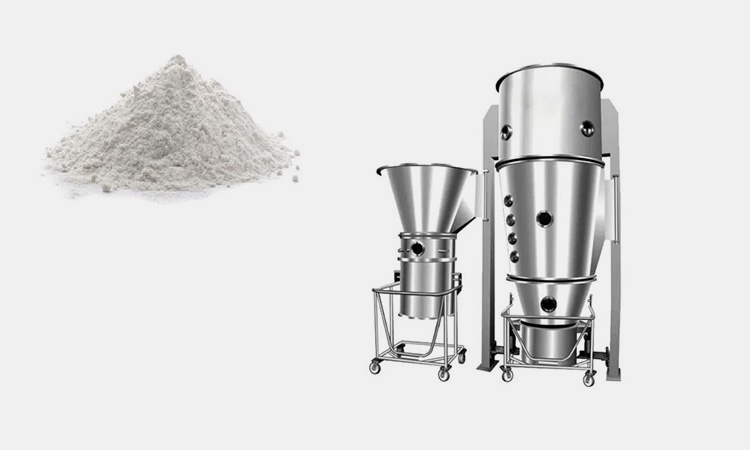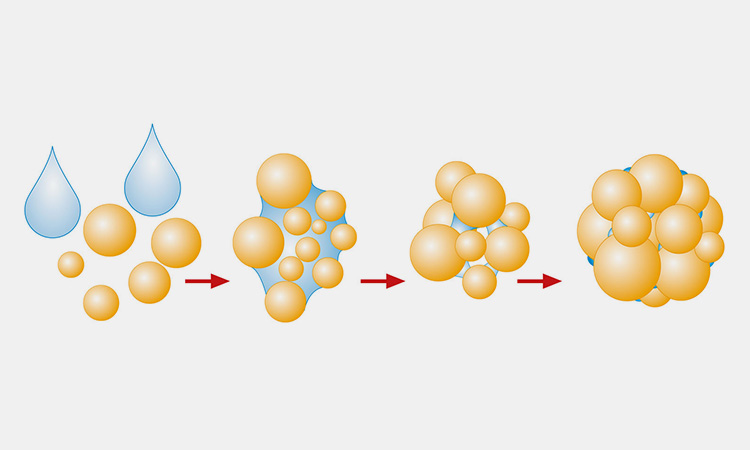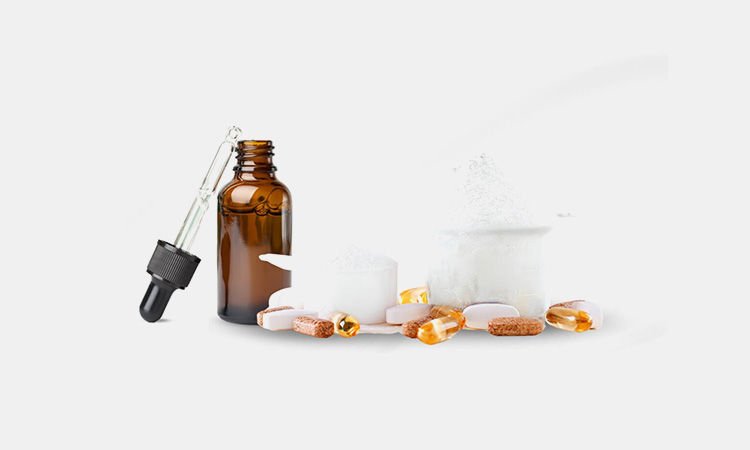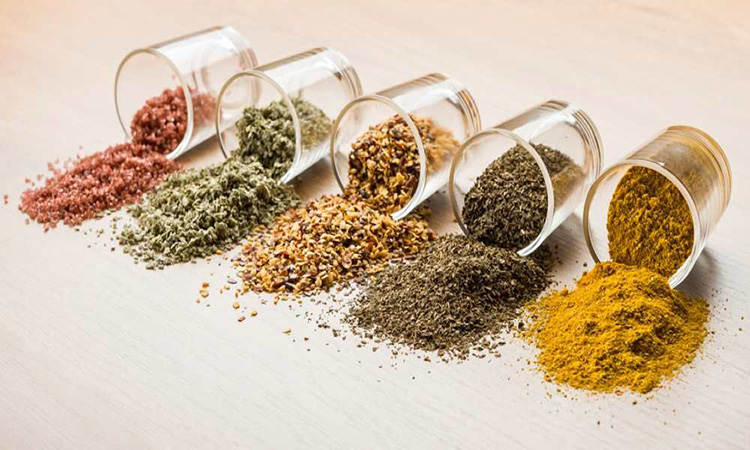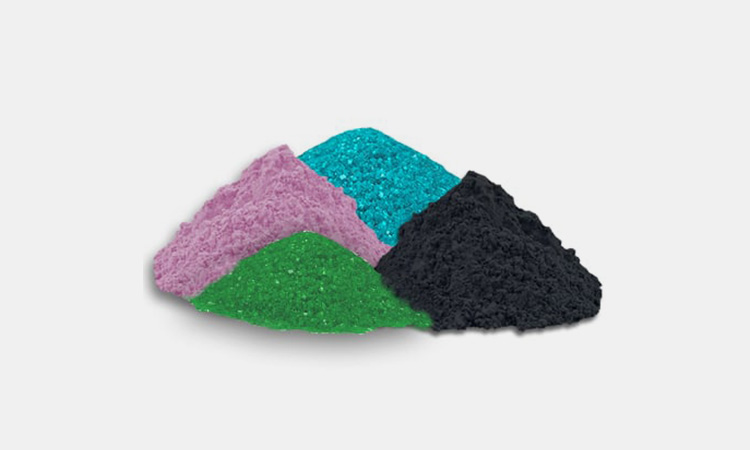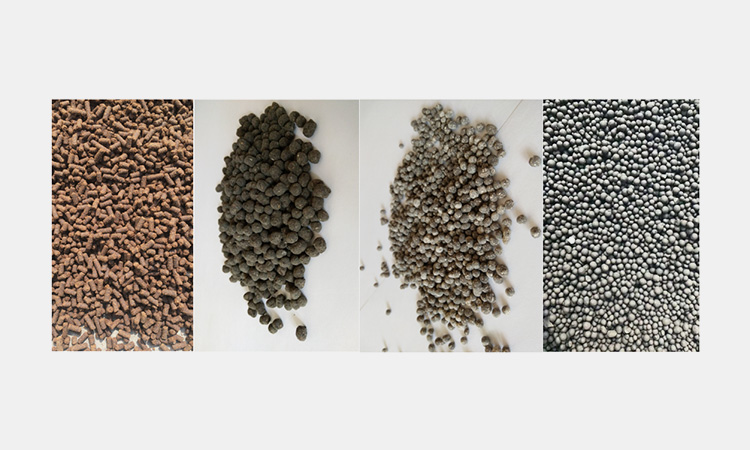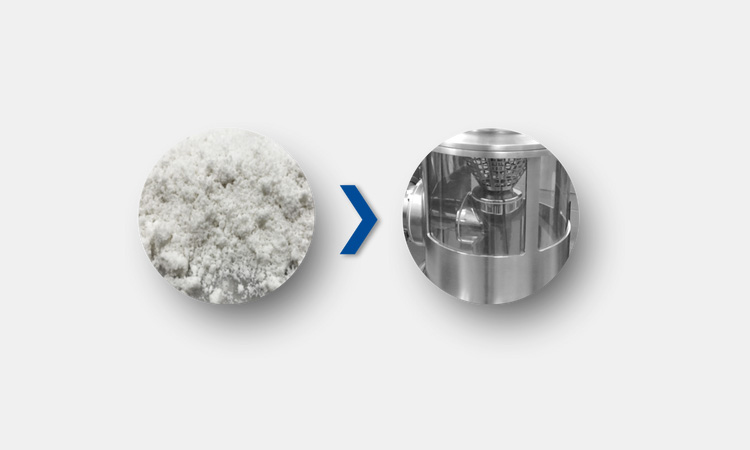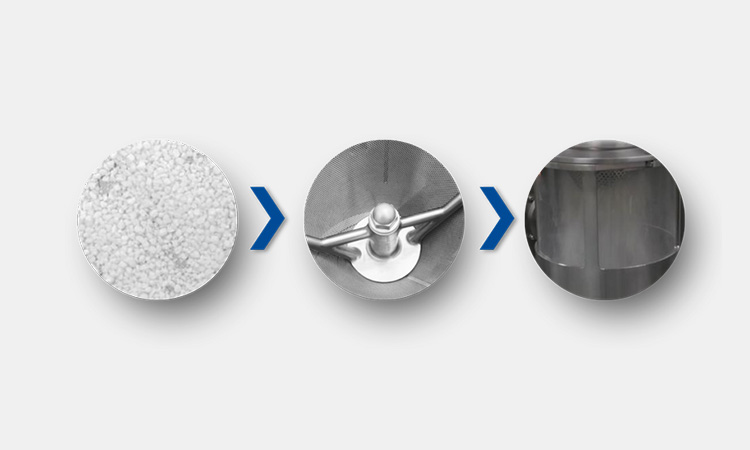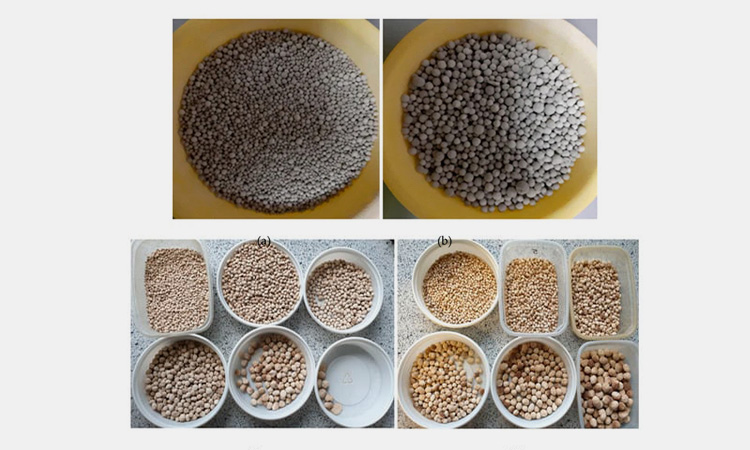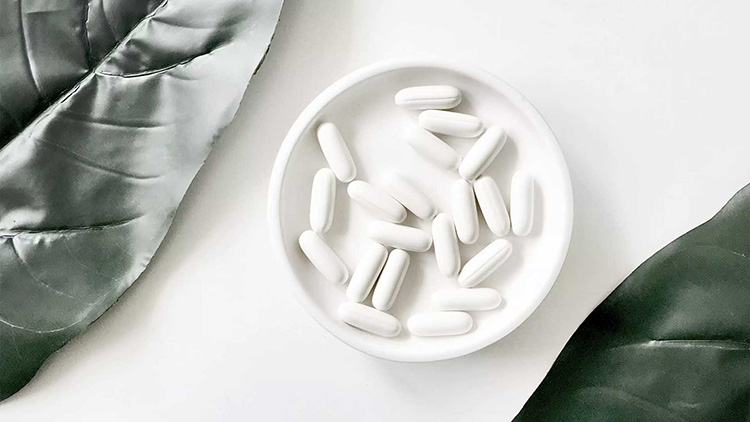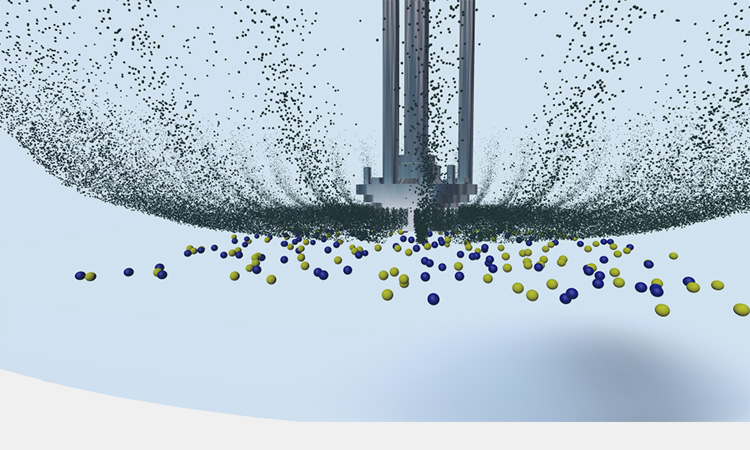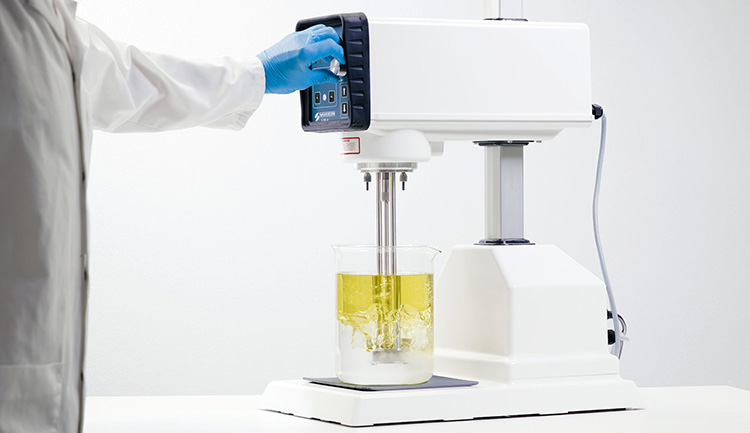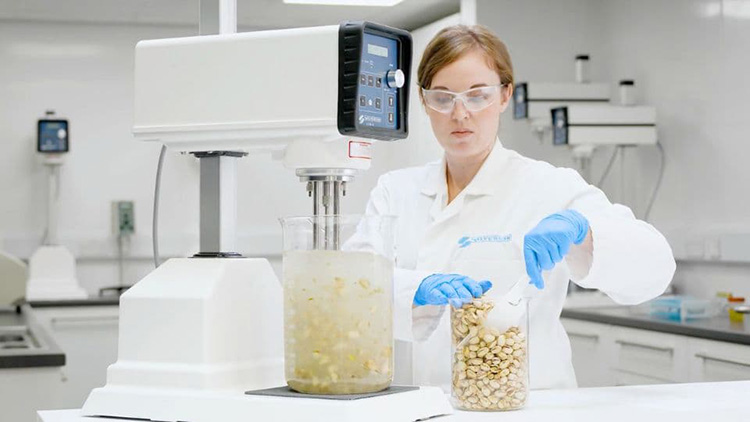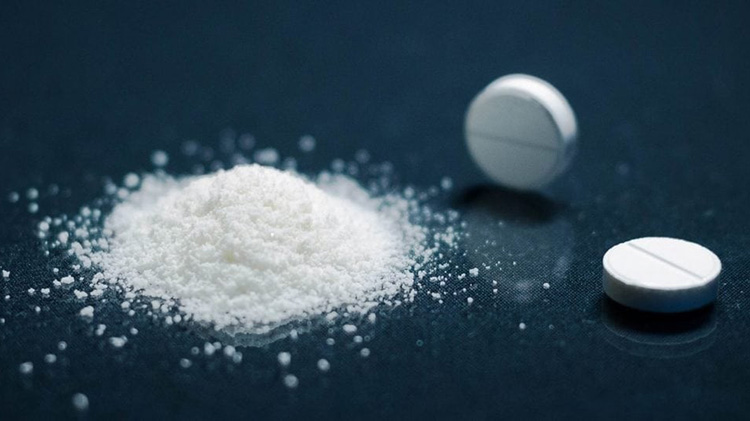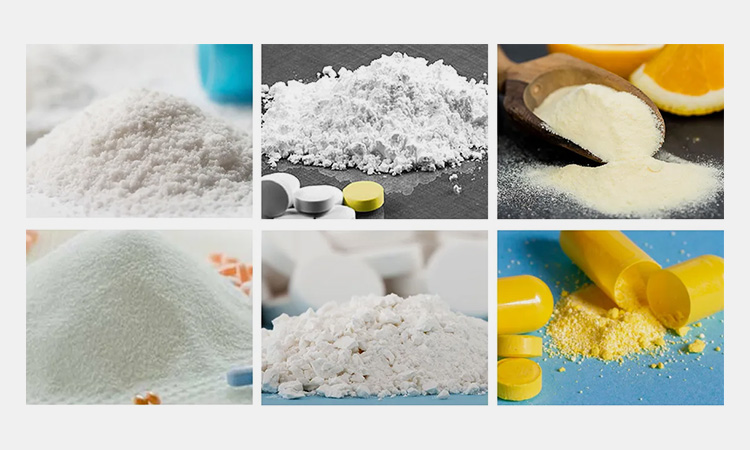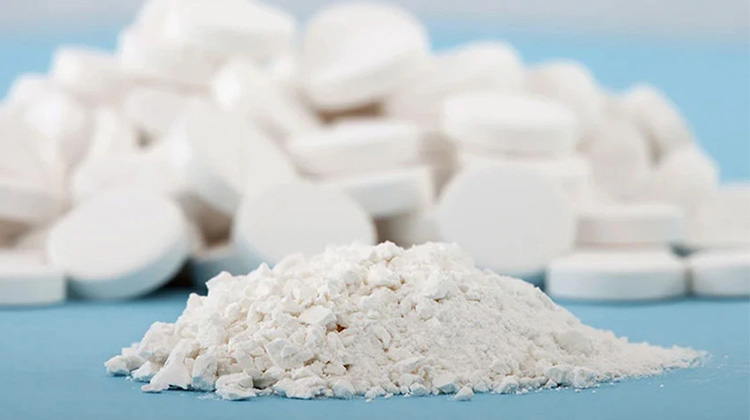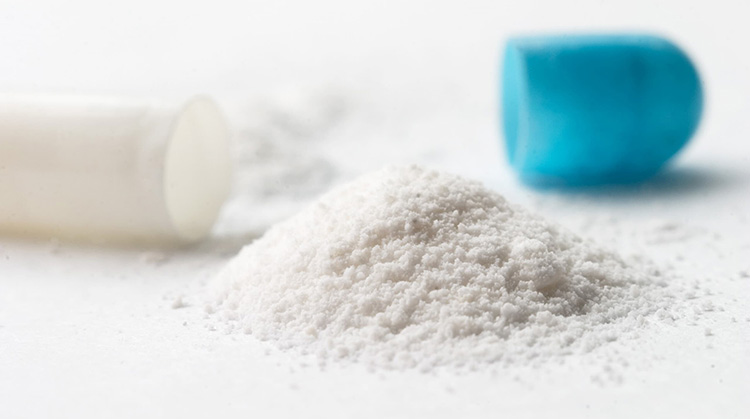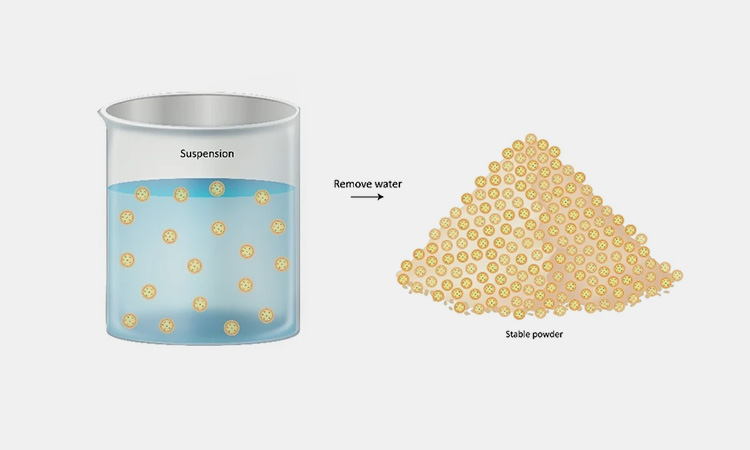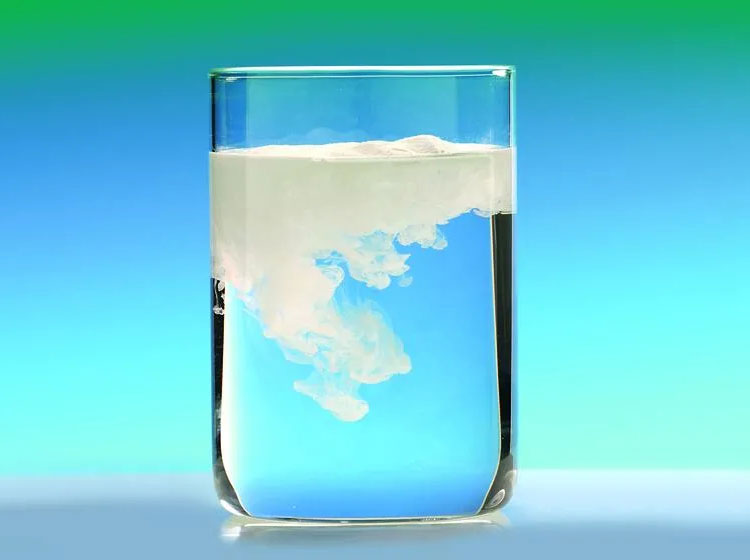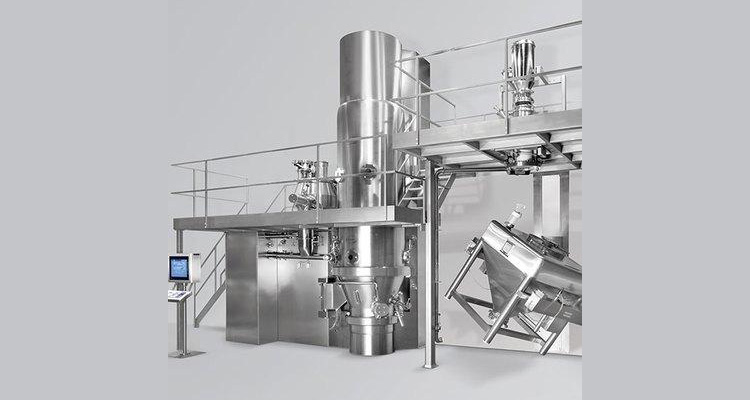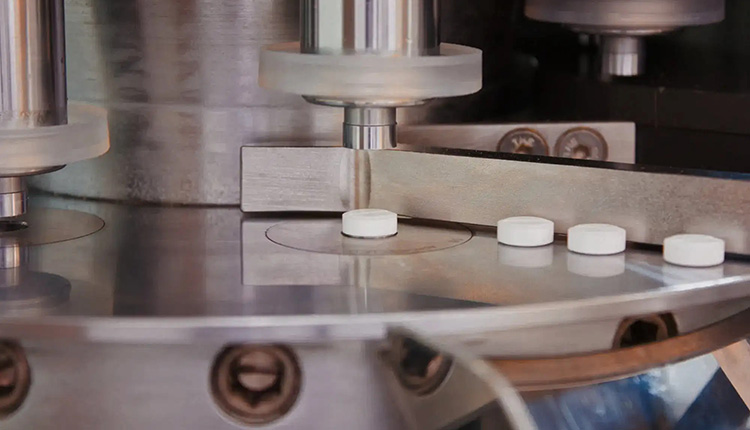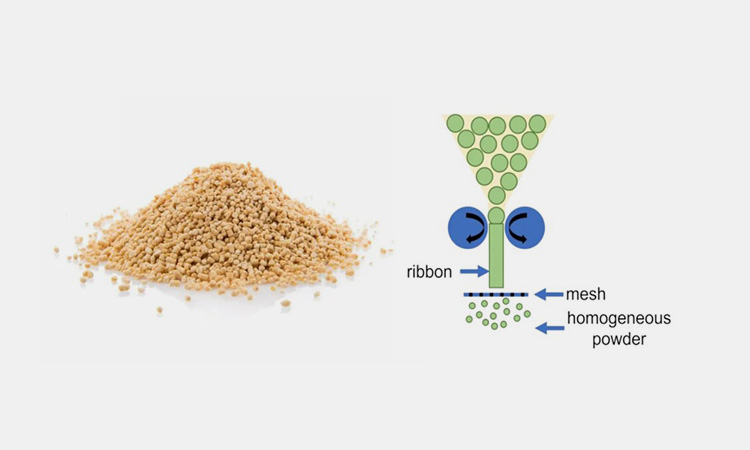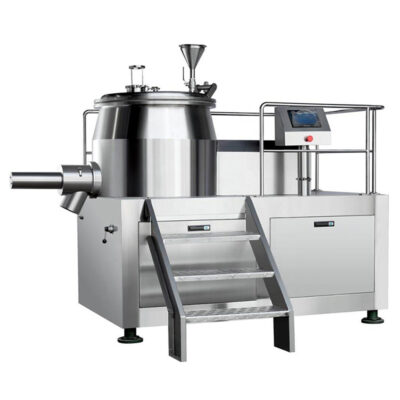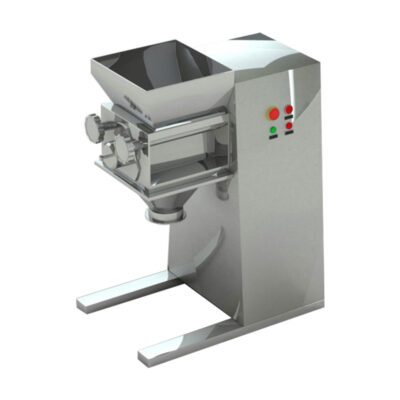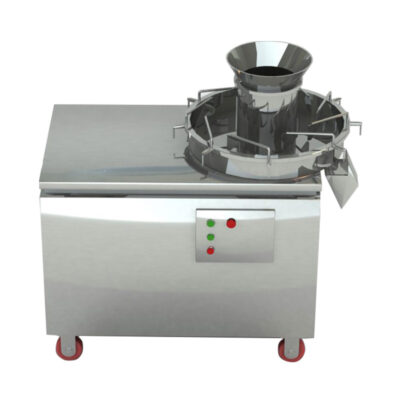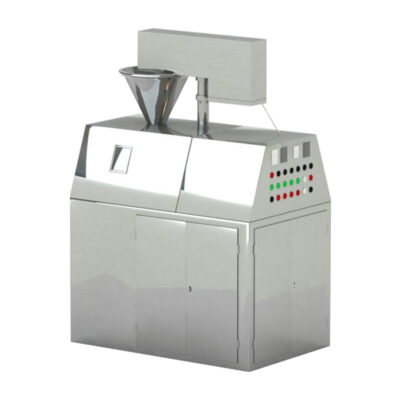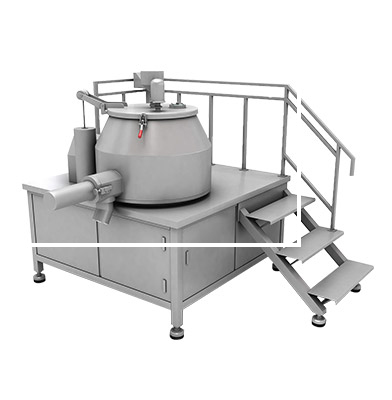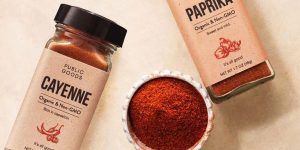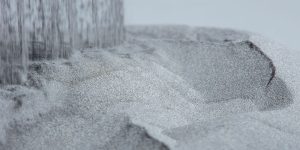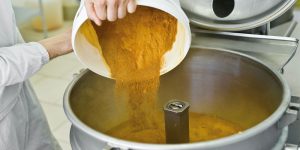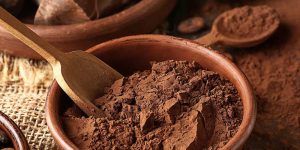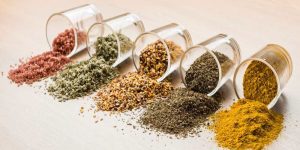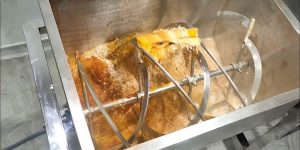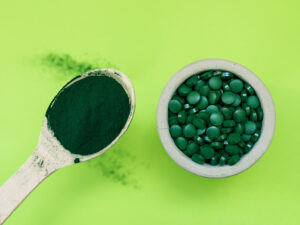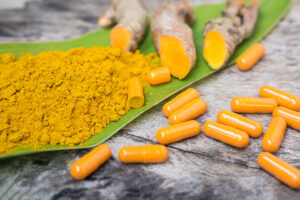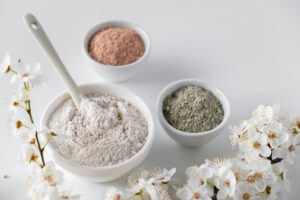What Is The Effect Between Mixing Material And Agitator Blade Speed During Wet Granulation?
The wet granulation is an indispensable choice in the pharmaceutical oral dosage form manufacturing. When choosing this pharmaceutical process, do you have any questions? For example, the specific production steps of this process, or the production efficiency, and the relationship between the material mixing time and the speed of agitator blade in the wet granulation process.
Through this wet granulation post, you may understand the benefits of this process to actual production and some challenges in the future. How to choose the relevant production process according to your own materials and how to use wet granulation to obtain the greatest benefits are topics you need to study for a long time. Get started now!
1.What Is Wet Granulation?
What Is Wet Granulation-sourced: foodfeedfinechemicals
Wet granulation refers to the process of converting various powders and ingredients into granules using professional granulation equipment, which are then convenient for tablet compression and capsule filling. It mainly combines dry powder and liquid binder to form a sticky mass, which is then granulated and dried, and finally ground and sieved again.
The final granules can be used for both tablet compression and capsule filling. This process can improve the flowability of powders and facilitate further handling and processing. It increases the bulk density of powders, reduces the space they occupy, improves uniformity, etc.
2.In Which Industries Can Wet Granulation Be Used?
Wet granulation is now used in various industries, including the pharmaceutical industry, food industry, chemical industry and cosmetics industry:
Pharmaceutical industry
Pharmaceutical industry-sourced:coopercomplete
The most important field of wet granulation is pharmaceutical industry. It is mainly used to process various drug ingredients or active ingredients. Grinding, wet granulation and drying them are convenient for subsequent granule tableting and capsule filling.
Food industry
Food industry-sourced: shopaccino
In the food industry, wet granulation is mainly used to produce mixed dry mixtures, such as various protein powders, muscle powders, milk powders, beverage powders, seasoning powders, pancake powders and baking powders.
Chemical industry
Chemical industry-sourced: inpaksystems
In the chemical industry, it is most used to produce various fuels and industrial raw materials, such as various chemical raw materials, detergent raw materials, construction raw materials, coatings, pigments, etc.
Cosmetics industry
Cosmetics industry-sourced: thebeautylookbook
In the cosmetics industry, it is usually used to produce various talcum powders, cosmetic powders and freeze-dried powders required for facial masks.
3.Why Wet Granulation Matters In Pharmaceutical Industry?
Wet Granulation Matters In Pharmaceutical Industry-sourced: fertilizerplantequiment
Wet granulation is very important in the pharmaceutical industry because it can form coarse particles from various fine powders, thereby converting them into particles with sufficient strength and firmness through drying and grinding.
Such particles can be used in the production of tablets and capsule filling. This process can not only improve the fluidity of the particles, but also make the size and shape of various particles uniform, so that the particles have sufficient strength to withstand the subsequent tableting and capsule filling.
4.What Is The Process of Wet Granulation?
Wet granulation is mainly divided into three steps:
The Process of Wet Granulation-sourced: dr.pharma
Step 1: Pre-treatment
Screen, crush and grind the powder ingredients. It is a process of pre-treating the powder. This method can control the powder into a uniform size or shape, which is convenient for subsequent mixing, shear granulation and drying.
Step 2: Shear granulation and drying
It mainly uses a high shear granulator for wet grinding to make it freer and more fluid. After removing the lumps in the formula and uniformizing their particle size, a binder with water is added to the mixture. After further mixing, shearing and granulation, the powder gradually forms a uniform particle size. Finally, it is dried in a fluidized bed to make them more solid powders or particles.
Step 3: Dry grinding
After shear granulation, these particle ingredients are thoroughly dried in a fluidized bed. Finally, they will be further ground and sieved to fine-tune the particle size to meet your various particle size requirements and can be precisely controlled. Finally, these particles can be efficiently used in tablet presses or capsule filling machines.
5.What Is The Effect Between Mixing Material And Agitator Blade Speed During Wet Granulation?
Effect Between Mixing Material And Agitator Blade Speed-sourced: quadro
In the wet granulation process, the mixing time of the material is closely related to the stirring speed. Through the optimal combination of these two parameters, different solutions can be provided for your different material mixing and granulation needs.
The relationship between the mixing time of the material and the stirring speed is:
The relationship between the mixing time of the material and the stirring speed-sourced: quadro
The stirring speed of the stirring blade can affect the mixing efficiency of the powder. If the powder is sheared and turned more times per unit time, the mixing speed will be faster and the efficiency will be higher. On the contrary, if the stirring speed of the stirring blade of the equipment is lower and the mixing time is longer, the shear force will be less sufficient, resulting in the inability of the material to agglomerate.
The faster the stirring speed, the shorter the shear mixing granulation, which is suitable for low-viscosity materials or materials with adhesives that need to be dispersed quickly;
The slower the stirring speed, the longer the shear mixing granulation, which is suitable for high-viscosity materials or materials that need to form particles slowly;
Other factors that affect the mixing time and stirring speed are:
Material characteristics
Material characteristics-sourced: russellfinex
High-viscosity materials, such as those containing a large amount of sugar or gel, require low speeds and longer mixing times. This can avoid excessive agglomeration or adhesion of powders or particles.
Low viscosity materials, such as inorganic or hydrophobic materials, require high speed with short mixing time. This promotes uniform distribution of the adhesive.
Types of binder and how to add it
Types of binder and how to add it-sourced: jilldumas
If the binder concentration is too high, you need to increase the stirring speed or extend the stirring time. This will allow the binder to fully contact and mix with the material.
If the binder is added by spraying, the speed of the stirring paddle needs to be adjusted to avoid excessive wetting of the material or uneven mixing. Different granulating equipment, combined with different stirring paddle designs, will affect the mixing efficiency.
Optimization strategy:
Parameter setting
Parameter setting-sourced: mixquip
You can make adjustments from the initial parameter setting. First, you can set the equipment to the recommended speed range, such as 30%~70% of the maximum speed. Then you can set the initial mixing time based on the material characteristics. The recommended setting value is 5~15 minutes. Then make corresponding adjustments based on the granulation and mixing status of the particles.
Dynamic adjustment
If the mixing is not sufficient, you can increase the speed of the equipment appropriately. If the particles have been broken very evenly and thoroughly, then you can gradually reduce the stirring speed. If the particles are too fine or there are too many fine powders, the mixing time may be too long, resulting in excessive shearing of the material. You need to reduce the stirring speed or shorten the stirring time.
Practical application suggestions:
Laboratory test
Laboratory test-sourced: fluidhandlingpro
Before the actual material is applied, an initial test can be performed in the laboratory. For example, by changing the speed or time, test and observe the effect of material mixing and shearing to obtain the best combination.
Process verification
Process verification-sourced: silverson
Before the material is officially mixed, you can verify whether the best combination can achieve the best effect and efficiency through verification. For example, adjust different parameters, adjust the mixing time and stirring speed according to the material to achieve the best effect.
Abnormal handling
If your material is too hard or too soft, it may be because the mixing time is too long or too short. You now need to adjust the speed or time. If the material sticks during the processing, it may be because the equipment speed is too low or the mixing time is too long. At this time, you need to increase the speed or shorten the mixing time.
6.What Is The Best Particle Size Targets for Wet Granulation?
Best Particle Size Targets for Wet Granulation-sourced: mixquip
The optimal particle size for wet granulation is usually set in the range of 75~850 microns. Particles within this range can effectively ensure your best tablet and capsule effects. To achieve this goal, you need to set the grinding size in advance during the material processing process, and set the size and uniformity of the granulation.
7.What Is The Effect of Wet Granulation On Drug Dissolution?
Effect of Wet Granulation On Drug Dissolution-sourced: media
According to previous studies, compared with other tablet manufacturing methods, the dissolution speed and dissolution rate of tablets and capsules produced by wet granulation are the highest. Especially for materials with high concentration and poor wettability, it can achieve the best processing effect. Wet granulation can eliminate all other adverse reactions in the final product and can be well used by patients.
8.What Is The Equipment Mainly Applied For Wet Granulation?
The main equipment applied for wet granulation are:
High shear mixer granulator
AIPAK high shear mixer granulator
High shear mixer granulator is the most commonly used equipment for wet granulation. It mainly uses the vortex effect generated by the rotation of the agitator through the vacuum conveyor to fully mix, crush and granulate the materials with the adhesive. It is suitable for mixing and granulating materials in various pharmaceutical, chemical, light industry, cosmetics, food and other industries.
Working principle of high shear mixer granulator
Firstly, put the material to be processed into the material container from the top of the conical hopper, cover the lid, start the equipment, and then stir;
During the stirring process, your material will be rotated in the container and rolled in different directions to form a flowing state;
During the process of fully mixing and shearing the material, the adhesive will be injected into the container and fully mixed with the material;
The fully mixed material will be granulated, gradually forming a wet mass and continuously agglomerating;
After forming a granular product of uniform size, the material will be pushed out of the container by the discharge valve to facilitate the next step of processing;
Main components of high shear mixer granulator
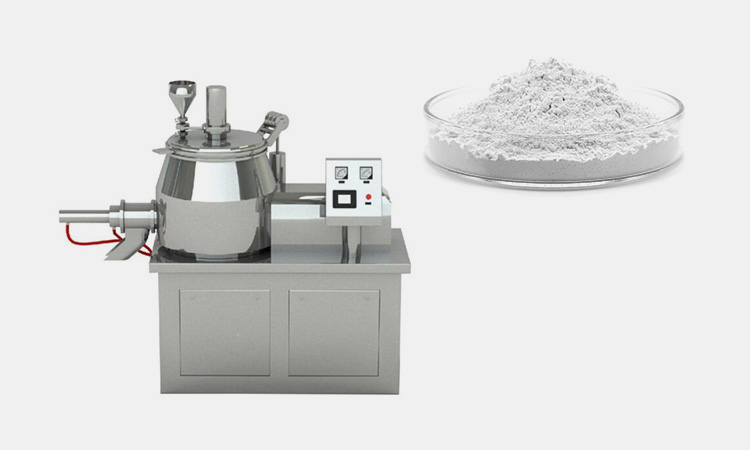
Main components of AIPAK high shear mixer granulator |
|
| Frame system | The frame system mainly includes operating ladders, inspection doors, etc. They mainly play a role of safety protection and support, and are convenient for operators to operate and maintain. The transmission system is installed at the bottom of the frame, including motors, reducers, air purification devices, pipeline systems, etc. One side of the chassis is equipped with an electrical control box and a movable door to facilitate user operation and use. |
| Pot cover system | The pot cover system is mainly composed of various parts such as vacuum feeding port, liquid adding gun, observation mirror, liquid adding hopper, air outlet, filtration system, locking device, sealing tape, etc. |
| Mixing system | The mixing system of the equipment is mainly composed of a stirring paddle, a conveying device, a variable speed power device, etc. The stirring paddle is located in the frame below the mixing pot. It can provide transmission and variable speed power for the equipment, and can shear, mix and grind the materials. By turning the stirring paddle up and down and rotating it in the mixing pot, and providing three-dimensional movement, it can ensure that the materials and other additives can be effectively mixed and continuously granulated. |
Fluid bed dryer
AIPAK fluid bed dryer
Fluid bed dryer is a kind of equipment specially used for drying after the successful granulation in the late stage of wet granulation. It is widely used in the production and processing of solid preparations in various industries. It has excellent mixing and drying functions. It can help the material particles or powders to be continuously dried by the flowing hot air, evaporate the water, and then solidify.
Working principle of fluid bed dryer
Working principle of AIPAK fluid bed dryer
Add the powder and granules you need to process into the product chamber. The equipment will suck the material from the material pipe into the mixing chamber by negative pressure.
After the material is sucked into the mixing chamber, the blower starts to run. Air is sucked in continuously.
After the airflow is sucked in, the static powder is lifted up. As the airflow speed increases, the space between the particles gradually increases. All particles will be suspended in the fluidized bed, rising and falling rapidly.
The gas in the fluidized bed will be gradually heated. The moisture in the particles lifted by the airflow will gradually evaporate and dry.
The dried particles will pass through the filter bag and be filtered. All large particles and undried materials will continue to be processed.
The dried and processed material particles will be automatically discharged by the equipment for the next step of processing.
Main parts of fluid bed dryer:
The internal design of different fluid bed dryers is roughly the same, and they can meet your fluidized bed processing and drying needs for various materials. Its basic structure is as follows:
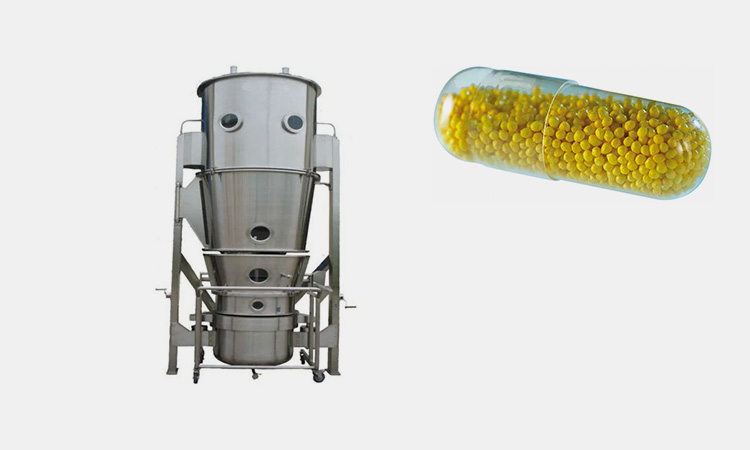
Main parts of AIPAK fluid bed dryer |
|
| Air handling unit | It is mainly responsible for regulating the drying temperature and humidity of the material in the equipment. When wet powder and granular materials are added to the fluidized bed, the filters, dehumidifiers and fans of the air handling system can provide you with different drying effects. |
| Main tower | It is the supporting mechanism of the entire equipment, which can provide you with a sturdy outer body and powerful processing space for the equipment. The main tower mainly includes the base, product container, extension and filter chamber. |
| Control panel | Using the most advanced touch screen control panel structure, you can control the flow rate, temperature, etc. of the fluidized bed more intelligently and easily. Make your operation more efficient. |
9.What Are The Advantages And Disadvantages of Wet Granulation?
There are many advantages of wet granulation, among which the most prominent ones are:
Make up for formula defects
Make up for formula defects-sourced: millpowder
First, it can change the composition properties of the formula, overcome formula defects and material defects, improve the fluidity of the powder, and make them more uniform particles.
Improve the compressibility of powder
Improve the compressibility of powder-sourced: filtra
Secondly, it also improves the compressibility of the powder. If the formula allows, it can compress the powder to a more solid and uniform state, which is convenient for subsequent tableting and capsule filling.
Independent of excipients
Independent of excipients-sourced: hanningfield
Independent of the role of excipients. During the operation of the equipment, by adding adhesives, it can shear and granulate the powder to make uniform and fluid particles, and is independent of the role of excipients.
Ensure the active ingredients of the material
Ensure the active ingredients of the material-sourced: squarespace
It can ensure that the active ingredients of the drug are more uniform in the particles, especially for materials with low solubility.
Improve the solubility and rate of the finished product
Improve the solubility and rate of the finished product-sourced: licdn
Improve the dissolution rate and dissolution rate of the finished product. The particles processed by the wet granulation process are more hydrophilic and have higher dissolution rate and solubility.
Avoid cross infection
Wet granulation is a production process with a high level of safety protection. It not only reduces the impact of dust during the manufacturing process, but also reduces the risk of cross infection of materials.
Wet granulation also has limitations:
Long processing cycle
Long processing cycle-sourced: millpowder
Wet granulation needs to go through three stages of processing. Pre-treatment, shearing, mixing, granulation, grinding and screening. It needs to be handled very carefully and controlled. The cycle is long, and the details and precision requirements are high. The processing steps are cumbersome and delicate.
High cost
High cost-sourced: thevendry
In addition to the long processing cycle, the equipment required for wet granulation is also very professional and large, and requires a separate space to set up and process. The processing time is long, and the requirements for labor, energy equipment and space are very high.
Not suitable for heat-sensitive and water-sensitive materials
The process of wet granulation requires the addition of a water-containing adhesive, and the later stage needs to be dried in a fluidized bed. For materials that are not suitable for high temperature and high humidity, this method is not suitable for processing.
10.Are There Alternatives To Wet Granulation?
Wet granulation can provide your tablet press and capsule filling machine with more fluid and uniform granular powder. But at the same time, in order to avoid excessive investment and cumbersome processing procedures, it also has an alternative:
Direct compression
Direct compression-sourced: huadapharma
If you have a lower budget or lower requirements for workers and labor, you can skip the wet granulation step and directly sieve, grind and compress the powder. This can avoid the high investment requirements of cumbersome steps.
Dry granulation
Dry granulation-sourced: lkmixer
Unlike wet granulation, dry granulation is also a good alternative. Dry granulation directly skips the process of fusing binders. It is mainly suitable for the handling and processing of powder materials that are sensitive to water.
Conclusion:
Through this effect between mixing material and agitator blade speed during wet granulation, you may get that Wet granulation is a mature and adjustable granulation process. It can provide you with a mature solution for the production of refined granules, tablets and capsules without any worries. If you have more needs in the following operation process, you are welcome to consult AIPAK now!
Granulator Machine Related Products
Granulator Machine Related Posts
Granulator Machine Related Videos
CONTACT US
Tell us your raw material and project budget to get quotations within 24 hours.
WhatsApp Us: +86 181 6426 8586
Want the best price & newest pharmaceutical machinery buying guide,tips and trends sent straightly to your box? Sign up for AIPAK’s monthly newsletter, we’re free for your consultation and Offer you the most suitable solutions!
The Buyer's Guide
- Capsule Filling Buyer's Guide
- Blister Packaging Buyer's Guide
- Tablet Counting Buyer's Guide
- Tube Filling Buyer's Guide
- Cartoning Buyer's Guide
- Gummy Making Buyer's Guide
- CO2 Extraction Buyer's Guide
- Empty Capsules Buyer's Guide
- Suppository Filling Buyer's Guide
- Tablet Coating Buyer's Guide
- Tablet Press Buyer's Guide
- Softgel Encapsulation Buyer's Guide
Most Popular
- 7 Importance Of Pharmaceutical Packaging In Different Applications You Must Know
- 6 Advantages You Must Know About Tablet Counting Machine
- 8 Advantages of Blister Packaging You Must Know
- 6 Critical Applications of Automatic Capsule Filling Machine
- 6 Stations You must Know to Improve the Filling Quality of Automatic Capsule Filling Machin
